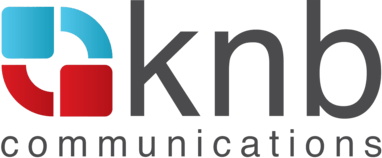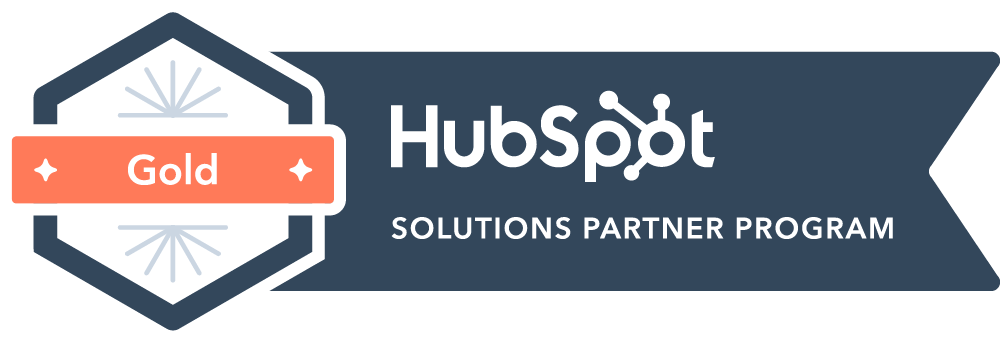Home | BLOG | GEO, AEO, AIO, SEO, LLMO, CAIO — WTH is going on with search? The healthcare marketer’s cheat sheet to all the new AI search buzzwords
GEO, AEO, AIO, SEO, LLMO, CAIO — WTH is going on with search? The healthcare marketer’s cheat sheet to all the new AI search buzzwords
Table of contents
GEO, AEO, AIO, SEO, LLMO, CAIO — WTH is going on with search?
The healthcare marketer’s cheat sheet to all the new AI search buzzwords
By Laura Hill, Senior Growth Manager
TL;DR:
Search is changing fast — and for B2B healthcare and biotech marketers, it’s getting smarter, more conversational, and a lot more complex. Traditional SEO is no longer enough in an era where AI tools like ChatGPT, Gemini, Copilot, and Perplexity generate answers instead of links. The rise of generative engine optimization (GEO), answer engine optimization (AEO), and other AI search tactics means your visibility now depends on how AI understands your content — not just how humans search for it.
The rise of AI search — and why it matters for B2B healthcare marketers
The B2B medtech and life sciences buying process already relies on credibility, trust, and expertise. Now, AI is redefining how those attributes are discovered.
When a clinician, hospital executive, or payer types a search like “best RPM solutions for multi-chronic populations” into an AI-powered search tool, they won’t see a list of ten links. They’ll see a synthesized answer — and that answer might summarize or cite your competitors instead of you.
This shift is massive. Instead of optimizing for page-one rankings, healthcare marketers now need to optimize for AI-generated visibility — ensuring your thought leadership, data, and positioning are what these new “answer engines” choose to feature.
That’s where a new vocabulary is taking shape:
- GEO (generative engine optimization) — optimizing content to appear in AI-generated answers.
- AEO (answer engine optimization) — structuring content so it can be cited directly in AI or voice responses.
- AIO (AI search optimization) — the umbrella term for visibility across all AI-driven search tools.
- LLMO (large language model optimization) — understanding how large models like GPT-4 or Gemini process and prioritize your data.
- CAIO (conversational AI optimization) — optimizing for AI agents and chat interfaces that guide purchasing decisions.
In short: AI has changed the way decision-makers discover information. And if your content isn’t AI-ready, your competitors may get to define your story.
So many names — what’s the difference?
Marketers and SEOs are still defining the language around AI search optimization. Here’s a quick guide to the terms you’ll see most often:
|
Acronym / term |
What it means |
How it’s used |
How it applies to B2B healthcare marketing |
|
GEO (generative engine optimization) |
Optimizing content for visibility in generative AI tools like ChatGPT, Gemini, Copilot, and Perplexity |
The broadest and most current term for AI search optimization |
Ensures your brand is cited when AI tools summarize topics like population health, interoperability, or AI diagnostics |
|
AEO (answer engine optimization) |
Structuring content so AI and answer engines can extract and cite it directly |
The predecessor to GEO, rooted in featured snippets and voice search |
Positions your content as the “authoritative answer” for healthcare executives searching for vendor insights |
|
AIO / AISO (AI search optimization) |
The umbrella term for optimizing content across all AI search platforms |
Often used interchangeably with GEO and AEO |
Helps your marketing team cover multiple search ecosystems — from traditional Google to AI Overviews and beyond |
|
LLMO (large language model optimization) |
Focused on how large language models retrieve, summarize, and cite information |
A more technical variation used by AI specialists |
Increases your chance of being referenced accurately in AI-generated briefings or executive summaries |
|
CAIO (conversational AI optimization) |
Centers on visibility within chat-based or voice assistant conversations |
Used less often, but captures the idea of optimizing for dialogue |
Ensures your brand is visible when decision-makers use AI to compare solutions or analyze vendors |
In other words: this isn’t just a rebrand of SEO. It’s an expansion of how we think about discoverability in a world where search engines don’t just find information — they create it.
What is answer engine optimization (AEO)?
Answer engine optimization (AEO) is the foundation of this movement. It’s about structuring your content so AI systems can understand it, extract insights, and present your brand as a credible source.
AEO goes beyond traditional SEO metrics like rankings or click-through rates. The goal isn’t just to appear on a search results page — it’s to be the answer that AI tools use and cite.
How AEO differs from traditional SEO
|
Criteria |
SEO |
AEO |
|
Focus |
Ranking on search results pages |
Getting cited directly in AI-generated responses |
|
Metrics |
Clicks, impressions, keyword rankings |
Mentions, citations, and visibility in AI summaries |
|
Format |
Keyword-optimized content |
Structured Q&A, FAQs, and concise explanations |
|
Authority signals |
Backlinks and domain authority |
Trusted sources, schema markup, and consistent entity data |
The AEO approach rewards clarity, accuracy, and authority — three factors AI engines weigh heavily when pulling answers.
What is generative engine optimization (GEO)?
Generative engine optimization (GEO) builds on AEO, expanding it for today’s generative AI era.
Where AEO focuses on direct answers, GEO focuses on AI synthesis — influencing how large language models read, understand, and cite your content when creating summaries or explanations.
GEO in action
GEO involves:
- Structuring content so AI can easily parse and summarize it
- Using clear data, citations, and evidence for AI credibility
- Building domain authority through third-party mentions and backlinks
- Testing how your brand appears across different AI platforms
- Monitoring and correcting misattributions in generative answers
In other words, GEO helps you shape how AI perceives, cites, and represents your brand online.
Why this shift matters even more in B2B healthcare
Healthcare and health tech are uniquely affected by this evolution because credibility equals conversion.
B2B buyers in this space are skeptical, risk-averse, and heavily influenced by compliance, outcomes, and clinical data. AI systems are trained to surface trustworthy, well-sourced, evidence-backed content — which means the right structure can make your thought leadership exponentially more visible.
If your content includes:
- Clearly labeled data sources
- Credible citations from clinical studies or whitepapers
- Transparent bylines and expert authors
- Consistent terminology around your solutions and value propositions
…then AI is far more likely to use your material when generating summaries or answers.
That means marketers who invest early in GEO and AEO will dominate brand visibility in the AI-driven era of healthcare marketing.
How this landscape is evolving
The world of AI-driven search is changing by the week. Here are the biggest trends shaping it:
The black box challenge
AI engines don’t reveal exactly how they pick or weigh sources. That means optimization is often trial and error, with researchers building benchmarks like GEO-bench to better understand how content is selected.
Bias toward authority
AI tools tend to favor established, trusted domains — think major media outlets, universities, and government sites. This makes earned media and brand credibility more valuable than ever.
Multi-engine strategies
ChatGPT, Gemini, Copilot, and Perplexity all work differently. What ranks high in one system might not appear at all in another. Marketers will need to diversify and test across multiple AI environments.
Sponsored AI results
AI search monetization is coming. Expect to see “sponsored answers” and “AI search ads” in the near future, echoing the evolution of paid search in the early 2000s.
Brand safety + accuracy
Because AI tools synthesize and paraphrase, they can sometimes misrepresent your message. Brands must actively monitor how they appear in AI-generated content and correct inaccuracies.
How B2B healthtech marketers can get started
Even though this field is evolving, you can begin building your AI search foundation now.
01. Structure your content for AI comprehension
- Use clear, hierarchical headers and concise paragraphs.
- Add schema markup to key resources like FAQs, whitepapers, and solution pages.
- Write short, definitive answers at the top of each page (“TL;DR for AI”).
02. Build digital authority beyond your website
- Earn high-quality mentions on trusted healthcare publications (Becker’s, Fierce Healthcare, MedCity News).
- Publish executive bylines and data-driven thought leadership.
- Link strategically between your case studies, press releases, and research summaries.
03. Align SEO + GEO
SEO still matters — search engines feed AI models. Combine keyword strategy with entity optimization (consistent names, data points, and context about your solutions).
04. Monitor your brand in AI tools
Test how ChatGPT, Copilot, and Gemini describe your brand. If they get it wrong — fix it by improving clarity, authority, and structure across your owned content.
05. Educate your internal teams
Make sure marketing, PR, and content teams understand that AI visibility is the next evolution of organic search. Add GEO metrics to your dashboards, such as “AI citations” or “brand mentions in generative summaries.”
The future of B2B healthcare visibility
The healthcare marketing landscape is moving from search-first to answer-first.
Generative engine optimization (GEO) and answer engine optimization (AEO) represent the next wave of brand discoverability — one where trust, authority, and content clarity drive AI visibility.
For B2B healthcare and health tech brands, this isn’t just a trend. It’s a shift in how buyers find and evaluate solutions.
Ready to future-proof your healthcare marketing strategy?
At KNB Communications, we help healthcare and health tech companies stay ahead of every digital evolution — from SEO to GEO. Our team combines technical strategy, storytelling, and deep industry expertise to make sure your brand shows up in all the right conversations (human and AI).
AI disclosure: In alignment with our commitment to transparency, we want to disclose that this blog post was substantially generated with the assistance of artificial intelligence technology. Our team of healthcare experts collaborates closely with AI to ensure accuracy and relevance for our valued readers in the health tech and life sciences sectors.

Laura Hill, Marketing Manager at KNB Communications, is a seasoned marketer with over a decade of experience in full-stack marketing. Her expertise extends to the intersection of cutting-edge technology, data-driven insights, contemporary marketing approaches, and corporate branding. Laura excels in crafting and implementing high-impact marketing strategies, placing a strong emphasis on analytics and lead generation. Her work consistently drives outstanding results in digital marketing, showcasing impressive conversion rates. Moreover, Laura's meticulous monitoring of key performance metrics ensures the achievement of ambitious corporate goals.
Search





.svg)




